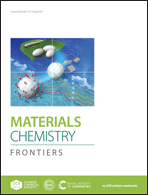Bimetal–organic-framework derived CoTiO3/C hexagonal micro-prisms as high-performance anode materials for metal ion batteries†
Abstract
Titanium based oxides are promising electrode materials due to their appropriate operating voltage, small strain expansion, fast rate capability, safety, and low cost. Carbon materials exhibit a high cyclic stability but relatively low capacities. In order to combine the advantages of these two materials, a composite of well-defined 1D hexagonal micro-prisms cobalt titanate/amorphous carbon (CoTiO3/C) is synthesized by a simple sol–gel method and bimetal organic framework derived carbon doping. This composite provides more sodium ion storage sites and inhibits structural collapse during electrochemical cycles. Moreover, the bimetallic oxides form a self-supporting network to realize a wide voltage redox reaction, further alleviating the volume change. The as-prepared CoTiO3 micro-prisms exhibit high capacities of 214.3 and 483.8 mA h g−1 in sodium ion batteries and lithium ion batteries, respectively. More importantly, CoTiO3/C displays an outstanding cyclic stability, with a capacity retention ratio of 89.3% at 1 A g−1 for 1000 cycles in sodium ion batteries and 94.25% at 5 A g−1 for 1800 cycles in lithium ion batteries, respectively.



 Please wait while we load your content...
Please wait while we load your content...